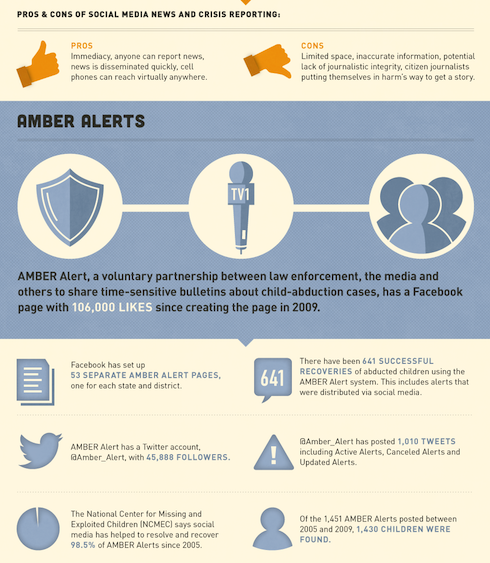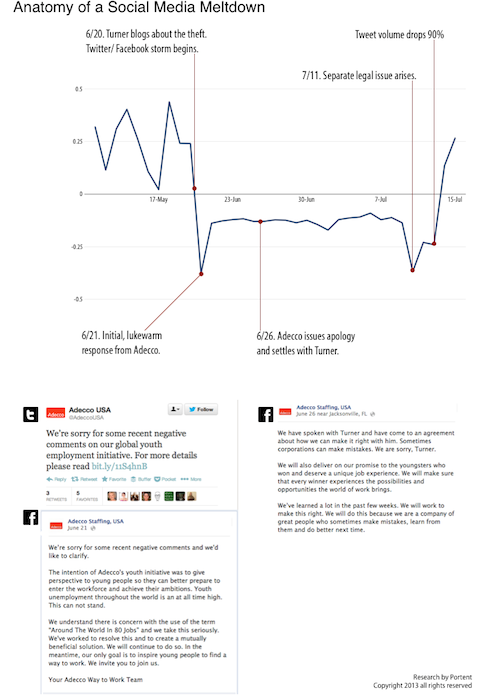By adaptive - August 27th, 2013
How to combat a social media crisis: Part 1: Information is the key to your customer’s heart, but what if it’s wrong? Here’s how to get your systems secure in a social media crisis…
As far back as 2011, Gartner was emphasising the importance of social media in crisis communications, giving it a seven on a scale from one to ten. It’s an issue. Not tomorrow. Not next year, but today. Businesses must formulate strategies for dealing with the dissemination of incorrect information before the brand is irrevocably damaged in the eyes of the customers and stakeholders.
Gartner describes a social media crisis as: “A crisis that arises in or is amplified by social media, and results in negative mainstream media coverage, a change in business process, or financial loss.”
So how can you effectively deal with the issue of incorrect information unleashed on a believing public? The first step, according to Richard Boorman, Executive Head, Media Relations and Social Media Vodacom, South Africa, is to have good monitoring in place.
“You don’t want to get surprised by something that is hours down the road by the time you find it,” he says, “We have a social media team that’s monitoring mentions. Also, very importantly, we’ve also got our customer care team, our social media customer care team, that runs from eight in the morning until ten at night, seven days a week.”
There are key factors that must be built into your corporate crisis communications strategy to ensure that you build brand loyalty and trust with customers and stakeholders – acknowledge the issue, reveal the truth, show how you plan to repair the damage, keep your stakeholders in the loop and be upfront about the process.
Sharon Latour, Chief Marketing Officer at Marketing Bee agrees, “You have to acknowledge and correct the information as soon as possible. If the information released was false, lead people to the correct information. If the information is true and has a negative impact on your brand, acknowledge it. Own up to issues and then turn attention to the solutions you plan to put in place.”
The role of the corporate is clear: be ready and have a plan in place for when things go wrong. Note: not if things go wrong. They will.
A step to the right
The release of false information comes in two flavours: public and corporate. Sometimes a member of the public will misinterpret a comment or a communique and create a social media storm that is entirely based on faulty facts. In the corporate space someone may have accidentally released information or said something that isn’t entirely accurate. In both instances your business needs a plan.
“Have an appropriate governance framework in place to prevent misinformation on social media,” says Ben Howden, Strategy Director at Inlight Media, “The goal is to pick up any inaccuracies in content posted, whether by a community member or internally, as quickly as possible and then correct the information for the rest of the community. This is particularly important in regulated industries.”
Howden believes that the following elements make up a well-constructed governance framework:
- Social media guidelines for employees using social media.
- Social media response framework outlining how to respond to positive and negative situations.
- Service Level Agreements to guide response times.
- Risk Register to identify and mitigate risks.
- Crisis Response Framework to guide the response to a social media crisis.
“As a company you can do a press release, make statements on Twitter and Facebook and you can also go to the secondary places where this is showing up and talk about it, but I think that if you get to that stage you’ve already lost,” says Boorman, “One of the key things is to cultivate – ahead of time - a conversation with your customers and stakeholders. I think it is also important to have built relationships with online influencers so you have the ability to get to a wide range of audiences in time to repair the damage.”
A network of brand ambassadors and key influencers, a robust framework for corporate communications and a firm governance strategy are key to a successful social media crisis solution. The information may have escaped, but you have the tools to manage how the information survives in the minds of your customers.
Mark Twain once wrote, “A lie can be halfway round the world while the truth is still putting its shoes on,” and according to Lance Concannon, Director at Disruptive Communications, “Thanks to the viral nature of social media this has never been truer. Quite often incorrect information can spread like wildfire over social networks and once that happens it’s very difficult to rein it in.”
It is a sad fact that most people won’t go and check the facts before they retweet. As Latour mentioned, speed is of the essence and Concannon believes that another arrow to add to your crisis communications bow needs to be going that extra mile.
“Create a landing page or a blog post that addresses the important issues in clear language, providing proof where possible, and then make sure this page is flagged up on all of your social media channels,” he says.
You can’t handle the truth!
Actually, the consumers really can. The Gartner presentation referenced above shows the dramatic slide of BP thanks to their poor crisis communications strategy during the Gulf of Mexico event. Every mistake they made is a lesson to be learned by the rest of the corporate world.
“The best thing you can do is communicate the truth to the customers through whichever channels they want to engage with you on,” says Concannon, “It’s important not to behave in an arrogant or dismissive manner.”
Howden adds that there are few things worse than being silent as a social media disaster runs its course. “Timely responses are essential,” he adds, “Being transparent and providing regular feedback updates are critical to keeping community members satisfied. In addition to this, aim to come to a resolution and communicate this clearly.”
The thing is, while social media channels can add fuel to misinformation fires, the same advantages work in reverse. Your organisation has access to the same viral power and you can use social to engage and interact with your customers. If you are in the wrong, don’t forget to apologise. And don’t couch that apology in corporate lingo, be honest and be upfront.
“When we started back in about 2010 there was a fair amount of resistance and for many their worst fears came true because, for the first time, people had a chance to directly and publicly air their frustrations with us,” says Boorman, “People saw that we were responsive and not hiding from them and we started to build dialogues. We listened and earned the right to have an online conversation and I think that when you have all of that in place, when something comes up you have a chance to make things right.”
In the second part of the series we will be examining how to manage a reputation risk scenario before it spirals out of control and how to prioritise the online conversations.
Next Reads
October 2013, New York
How you can leverage social media for a more effective customer service function and better customer insight
Brochure Programme

